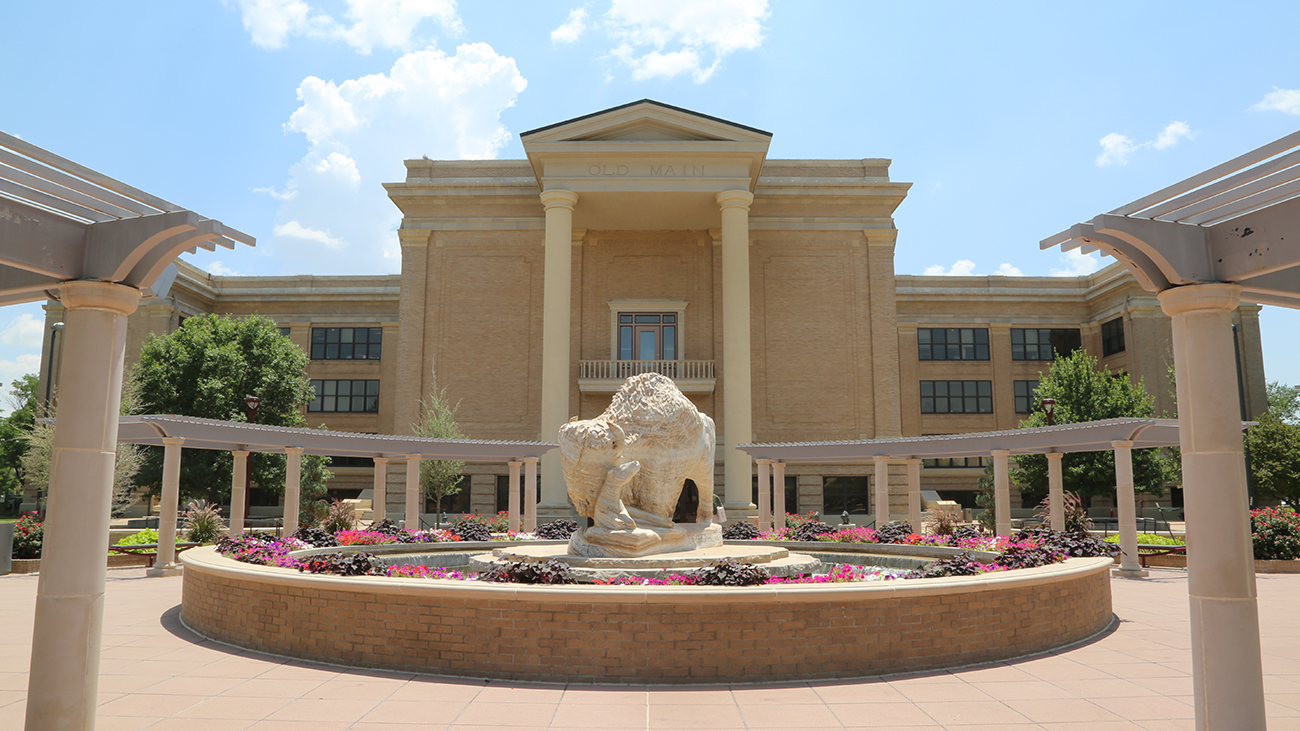- Graduate
- Research
- Excellence
- Featured
- Community
WT Earns Carnegie Recognition as Regional Research University
Copy by Chip Chandler, 806-651-2124, cchandler@wtamu.edu
CANYON, Texas — West Texas A&M University’s efforts as a Regional Research University officially has earned the University a coveted classification.
The American Council on Education and the Carnegie Foundation for the Advancement of Teaching has classified WT as a Research College and University, or RCU, a new designation that identifies research happening at colleges and universities that historically have not been recognized for their research activity.
According to ACE and the Carnegie Foundation, the new designation, which includes 216 institutions across the country, encompasses institutions that spend more than $2.5 million annually on research, regardless of whether they offer doctoral degrees.
WT spends approximately $10 million per year on research activities and currently offers two doctoral degrees: one in agriculture and one in educational leadership.
“Acquiring Carnegie ranking as a research university was a goal of the long-range plan WT 125: From the Panhandle to the World,” WT President Walter V. Wendler said. “But WT is not just a research university, WT is a Regional Research University. The research conducted by our faculty and students focuses on issues, problems and opportunities which are specific to the people, communities, businesses and industries of the Panhandle and West Texas.”
The WT 125 plan is fueled by the historic One West comprehensive fundraising campaign, which reached its initial $125 million goal 18 months after publicly launching in September 2021. The campaign’s new goal is to reach $175 million by 2025; currently, it has raised more than $165 million.
“Schools, healthcare, culture, energy, agriculture, and industry in rural areas are different than in urban areas,” Wendler continued. “Many universities are conducting research related to urban regions; WT is conducting research related to rural regions, and we are proud to be recognized for our efforts. These findings offer valuable insight for other regions and areas facing similar challenges.”
The Carnegie RCU designation is a “significant affirmation of the depth and impact of our research enterprise,” said Dr. Angela Spaulding, vice president for research and compliance and dean of the Graduate School.
“It reflects the exceptional scholarly contributions of our faculty, students and staff, and recognizes that meaningful, transformative research is taking place at regional institutions like ours,” Spaulding said. “As a university firmly committed to addressing the challenges and opportunities of the Texas Panhandle and beyond, we will continue to advance research that is both locally relevant and globally informed.”
Carnegie Foundation recognition was previously limited to Research 1: Very High Spending and Doctorate Production, which now includes institutions spending $50 million or more in research and offering 70 research doctorates annually; and Research 2: High Spending and Doctorate Production, which includes $5 million in research spending and 20 research doctorates annually.
The Carnegie Classifications were updated this year to expand the recognition of the range of ways colleges and universities engage in research and development, officials said.
“A highlight of our work to modernize the Carnegie Classification is the new Research Colleges and Universities designation, which will shed light on institutions that have engaged in research but historically haven’t been recognized for it,” said Ted Mitchell, president of ACE. “Instead of limiting research designations to the select institutions that award Ph.Ds., all types of colleges and universities will now be celebrated for their research contributions. That’s great news.”
About West Texas A&M University
WT, a Regional Research University, is redefining excellence in Canyon, Texas, on a 342-acre residential campus, as well as the Harrington Academic Hall WTAMU Amarillo Center in downtown Amarillo. Established in 1910, the University has been part of The Texas A&M University System since 1990. WT, a Hispanic Serving Institution since 2016, boasts an enrollment of more than 9,000 and offers 66 undergraduate degree programs, including eight associate degrees; and 44 graduate degrees, including an integrated bachelor’s and master’s degree, a specialist degree and two doctoral degrees. The University is also home to the Panhandle-Plains Historical Museum, the largest history museum in the state and the home of one of the Southwest’s finest art collections. The Buffaloes are a member of the NCAA Division II Lone Star Conference and offers 14 men’s and women’s athletics programs.
—WT—

